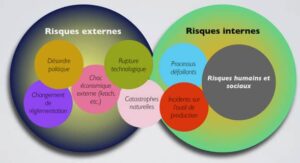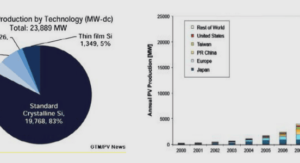MISCEGENATION AND RACE MIXITY IN LOUISIANA
Blackness and Whiteness in a legal context in Louisiana
In time the American Society has attached various meanings to color differences, including assumption about a person’s racial identity which cannot be easily determined on the sole basis of skin color. The identity choices of multiracial individuals with Black heritage have traditionally been delimited in Anglo-Saxon America. The fast increase of miscegenation led to a new political interest in the identification of multiracial individuals. Therefore, to resolve legally the difficulties of defining racial identity in a population of multiracial mixture, the white American Authorities in several states introduced “The Onedrop rule” that automatically defined individuals with any black ancestry or with the smallest traceable amount of black blood as Black before the law. “The One-drop rule” also known as the hypo-descent law denied mixed-race individuals a legitimate claim to whiteness and assigned them to a purportedly lower status of the social ladder and the heritage hierarchy. Through this practice, mixed-blood people were generally and legally identified as Blacks. “The One-drop rule” itself suggested quite literally that one can at once be fully Black, in regard of the law, and only one drop black blood in reality. Increasingly, “The One-drop rule” has been replaced by another methodology of deciding who is Black or White. In this new racial definition, a person’s race is expressed in terms of “where most of their ancestors come from” whereas, in “The One-drop rule” definition, the majority of mixed-blood people were racially considered belonging to their mothers’ racial community whatever may be their physical Whiteness. Most of their mothers were descendants of native African Americans. In that case they were legally Blacks even though a great number of them were “Octoroons”, that is to say that they have only one-eight black blood. To some extent, the passage of the “One-drop rule” was possible because of the fact that race had been defined in Anglo-Saxon America as exclusive. In other terms a person could only have one race before the law. However, in spite of the “One-drop rule” the essence of racial “passing” challenges the legal view of race as exclusive. So with the 12 Americans the definition of race was based on theoretical consideration but not on physical reality of individuals. In Louisiana, the term miscegenation has been also used in the context of laws banning interracial sexual relations, especially interracial marriages. These laws were generally known under the name of “Anti-miscegenation laws”. Besides the legal definition of racial identity in the United States, race-mixing between white and black people has been legally a taboo with the establishment of the “Anti-miscegenation laws”, barring Blacks and Whites from marrying or having sex otherwise. Its struggle was at bottom to establish and maintain whiteness as a separate racial identity to preserve its “purity” and “integrity”. People, both black and white, who had infringed the “Anti-miscegenation laws”, were liable to fines, servitude or even banishment from the state where the offence had been committed. Particularly, the “Anti-miscegenation law” was repealed in 1972 in Louisiana. Contrary to the Anglo-Saxon identification based only on a two-race category system, that is to say one is Black or White, the French and Spanish rulers admitted a three-tier race category that resulted in the creation and recognition of a new and intermediate racial category that is neither Black nor White but often embraced both. In Louisiana this category was essentially composed of the Free People of Color who would be considered to be neither one race nor the other, but incorporate both categories into a unique hybrid between the two. Some people among those with a transcendent racial identity, refuse to side with any racial category since they see race as a “false categorization of humanity”. They want to be understood and considered as just human beings. As an illustration, Jean Toomer, the mixedrace writer from Louisiana Afro-Creole, in his essay entitled “The Crock of Problems” states: “I am at once no one of the races and I am all of them. I belong to no one of them, I belong to all” (The Crock of problems, p: 56)6 . Thereupon, Toomer tries to make clear the confusion about his racial identity by rejecting both racial categories and identifies himself as an “American” The enforcement of racial classification in Anglo-Saxon Louisiana was undoubtedly marked by the advent of The Jim Crow Laws with the legal separation of the white race and the black race. This set of segregation laws passed at the State level roughly between 1876 and 1900, required separate schools and public facilities, for example railroad cars.
Racial Passing as a Challenge to legal
Definition of Race in Louisiana
Racial passing is known as the phenomenon of light-skinned Blacks with white physical features, who identify themselves as white people. This attitude can be considered as all false or forged identity, behavior and so on and so forth, put on by people to mask their true selves. The choice to pass for white is most of the time adopted by people who physically appear white but are legally identified as blacks. The mixed-race heritage people’s physical similarities to Whites added to their affectation of white mannerism enable them to pass successfully to pass from the black race to the white race. This ambivalence of race in Louisiana makes it possible for Blacks to challenge white racial classification based not on skin color but on family background. In other words on the traceable amount of black blood in a culture, founded on white values, that equates security and success with whiteness. Therefore, in order to succeed and live in security some mixed-race individuals use the “passing” strategy to manipulate their legal identity and strive for equal opportunities. Then they refuse to accept racial categorization by resisting the rules of color division. Rules which demand that one accept a position within a predetermined hierarchy. By doing so “passers” renounce blackness, an authentic and legal identity that they cannot entirely disclaim, in favor of whiteness, an opportunistic one which they also cannot fully claim. For instance the Ex-Colored Man declares that: “I finally made up my mind that I would neither disclaim the black race, nor claim the white race; but that I would change my name, raise a moustache, and let the world take me for 15 what it would; that it was not necessary to go about with a label of inferiority pasted on my forehead”7 . Even if mixed-blood people are legally classified as Blacks, their physical whiteness misrepresented this legal determined racial identity. In James Weldon Johnson’s the Autobiography of an Ex-colored Man, the main character, the Ex-colored Man decides to pass for white since after witnessing the lynching of a black man he realizes that to be black is synonymous of insecurity, of being victims of injustice and of “shame at being identified with a people that could with impunity be treated worse than animals” 8 Racial passing reveals the instability of racial distinctions. It also challenges the binary nature of American racial ideology. Otherwise the embodiment of physical whiteness and legal blackness legalizes the instability of these ideological frontiers and demonstrates that they are increasingly permeable since “The mulatto’s place in American society has never been fixed or certain; passing is but a tangible illustration of this legal and social fluctuation” 9 . Legally black people who decide to side with the white community succeed easily in this strategy most of the time because the price for it is just to move away from black relatives to live in an environment where their family background are unknown. This is due to the fact that skin color is very complex in defining race in the United States. For example, in Alice Dunbar-Nelson’s story entitled “The Stones of the Village” in which the protagonist, Victor Grabért, can pass for White, without being discovered as Black, under the sole basis of his skin color. Grabért declares that: “My blood is stained in two ways. Who knows it? No one but myself, and I shall not tell. Otherwise I am quite as good as the rest.” (The Stones of the Village, p: 10)10Then the mixed-blood Grabért has succeeded in challenging official definition of racial identity as long as he is not discovered “sailing under false colors” 11 or identity.In addition, in James Weldon Johnson’s The Autobiography of an Ex-Colored Man, the protagonist, the Ex-Colored Man, becomes racially mobile that at times we wonder whether he is passing for white or black. Concerning this ambivalence about whiteness as well as blackness, Joe Williamson has argued that: “By 1900 it was possible in the South for one who was biologically pure white to become black by behavior. A white person could cross over to blackness. Blackness and whiteness become a matter not just of color or even blood, but of inner morality reflected by outward performance”12 . Therefore this quotation demonstrates that the noticeable absence of black skin, in a legally black individual, that is the mark of racial identity highlights the breakdown of racial categories. In other words what Majorie Gorber called a “category crisis”: a failure of definitional distinction, a borderline that becomes permeable”13 . In this regard, social indeterminacy evokes a crisis of identity in the United States, precisely in the South. However “passing” does not only mean having social and economic success, but it demands living fearfully of being betrayed by one’s family background. In this case the “passer” is likely to lose day in day out his social and economy success since all family connection with the black community by is liable to racial discrimination. This is the consequence of the long process of race mixity in Louisiana that the AngloSaxon colonists refused to admit as such.
Creole people and Creolization in Louisiana
Louisiana’s political and social life has long been influenced by foreign culture. Then, the influence of the West Indies has visibly participated in the process of the populating of the colony; in other terms in the creolization of a large part of Louisiana’s inhabitants. In this extent, Louisiana and its neighboring Caribbean colonies have developed intimate links during the eighteenth century; centered on maritime trade, the exchange of capital, information and the migration of colonists. From such beginning Haitians exerted a profound influence on Louisiana’s politics, religion and culture. In colonial Louisiana Creole was used with the definition of “native born”, regardless not only on race, but on social caste. It distinguished the native slaves from native Free People of Color and native planters from the new African and European arrivals. Eventually, the word Creole was used to describe the people who were born or brought to the New World. The slave trade brought over a large amount of people of color from West Africa and some of those people also had roots that extended back to Europe. When the Europeans blended with the black slaves in Louisiana and the Free People of Color who migrated from Haiti and West Indies to Louisiana, the result referred to Creoles of mixed African and French or Spanish descent, and they were distinguished as an intermediate caste between the white masters and the black slaves. Their social and legal status, even after the American takeover of Louisiana in 1803, resembled that of a third racial category with special treatment neither as good as Whites’ nor bad as Blacks’. In the Reconstruction era, former free Creoles of color also struggled to maintain their intermediate social and economic position over that of the new freedmen, most of whom were African American from whom they were differed in language, religion and culture. In the ethnic sense of Creole, to be creolized means to be acculturated into an established Creole community, in other words to adopt Creole behavior and customs after living near them for a long time. For a long period, Blacks and Whites alike freely acknowledged that the Creole identity was claimed and shared by members of both races. But, during the late nineteenth 19 century, white creoles, with the fear of consideration of “racial purity” and under the pressure of suspicions regarding of “impure blood”, rejected black Louisianans who claimed a Creole identity. In order to secure their threatened social status, white creoles insisted exclusively upon the Caucasian composition of the category. In this extent a number of white Creole organizations were set for protecting the status of what they called the “true Creole” and fought actively against everything that referred or even implied the existence of Creole of color or other considerations that could destroy their privileges. Creoles often assumed a white status at the workplace because the better positions were limited to black Creoles or Creoles of color. These people often lived secrete social lives in order to maintain their traditional Creole identity out of the job. German, Spanish and some of the early Anglo-American settlers to enter Louisiana learn French, intermarried with the locals and adopted Louisiana’s customs while making a few contribution of their own in cooking, architecture and laws. In this sense, new comers largely adapt the local dominant culture, while adding a little something new. In Louisiana this form of creolization also means that shared language and culture cut across division of race and caste. Over times, the black creoles and Africans created a French and West African hybrid language called Creole French or Louisiana Creole French. In some circumstances, it was used by slaves, planters and Free People of Color alike. It is still spoken today in central Louisiana. The term Creole is also used often to refer to the city of New Orleans, which has a large Creole population thank to the fact that the region was originally settled by the French colonists. Creolization means literally interbreeding of diverse people and figuratively hybridization of cultures. Louisiana is also home to people called Cajuns. Many people are not aware of the differences between Creole and Cajun. In contrast to a Creole, a Cajun is a descendant of an Acadian. The Acadians were a group of French settlers in modern day Nova Scotia and New Brunswick, Canada. When the English expelled the Acadians from Canada in 1755, they took refuge in the French colony of Louisiana where they mixed with the established population such as the Spanish, the 20 French Creole, Native Americans and Anglo-Americans. A new ethnic group of Cajuns resulted from this mixture of people or miscegenation. However, it is important to note that as more time goes by, the terms Creole and Cajun have created confusion for the general public. Due to its geographic situation and its early relations with the West Indies, Louisiana had been long influenced by people and culture from these islands known by their race mixity and Creole presence. The Louisiana’s mixedrace inhabitants have positively taken profit from the cultural and economic legacy of their descent.
Dedication |





